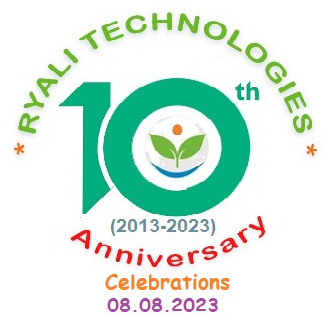STP FAB TECHNOLOGY
FAB (FLUIDISED AEROBIC BIOREACTOR)/ MBBR (MOVING BED BIO REACTORY) technology employs thousands of polyethylene biofilm carriers operating in mixed motion within an aerated wastewater treatment basin. Each individual biocarrier increases productivity through providing protected surface area to support the growth of heterotrophic and autotrophic bacteria within its cells. It is this high-density population of bacteria that achieves high-rate biodegradation within the system This technology provides cost-effective treatment with minimal maintenance since MBBR processes self-maintain an optimum level of productive biofilm. Additionally, the biofilm attached to the mobile biocarriers within the system automatically responds to load fluctuations.
This method makes it possible to attain good efficiency results of disposal with low energy consumption. This process is used for the removal of organic substances, nitrification and denitrification.
Advantages
Compact Design and cost efficient, Capacity can be easily upgraded for load increase, No return activated sludge stream required, No F/M ratios or MLSS levels to maintain,Minimize process complexity and operator attention, Fast recovery from process upsets
MBR – STP
Membrane Bio Reactor Technology based on Biological Treatment followed by Membrane seperation, system comprising of an intense activatesd sludge process with the biomass separation stage carried out by membrane cassestes located outside the aeration tank in submerged In membrane tank or side stream.
- The mebranes replace the settlement stage in conventional activated sludge systems and effectively revolutionize the proecess
- The seperation of biomass from trerated water using membranes provided filtered quality final effluent, offering possibilities of re use.
- It allows very high biomass mixed liquor suspended solids (MLSS) concentrations to be developed in the bioreactor without detrimental effects usually associated with tradional settlement techniques.
Advantages
Low Foot print, High MLSS , High aged attached sludge All kinds of bacteria survival, Less sludge production, No sludge carryover, High Quality Effluent.MODULAR STP
Ryali technologies offers a wide range of pre engineering, pre fabricated packaged sewage treatment systems to handle domestic and industrial sewage originating from industrial residences, large commercial complexes, small and medium industries. Packaged units come in standard modules with capacities ranging from 5 m3/day to 200 m3/day.
Application & Uses
- Golf & Country Clubs
- Holiday Camps
- National Parks
- Hotels & Resorts
- Highway service stations
- Military Camps
- Institutions
- Restaurents
- Housing Complexes
STP SBR TECHNOLOGY
SBR is a SEQUENTIAL BATCH REACTOR process. It provides highest treatment efficiency possible in a single step biological process.
SBR – System is operated in a batch reactor mode which eliminates all the inefficiencies of the continuous processes. A batch reactor is a perfect reactor, which ensures 100% treatment.
Two modules are provided to ensure continuous treatment. The complete process takes place in a single reactor, within which all biological treatment steps take place sequentially.
NO additional settling unit / secondary clarifier is required! The complete biological operation is divided into cycles. Each cycle is of 3 – 5 hrs duration, during which all treatment steps take place.
Explanation of cyclic operation: A basic cycle comprises: Fill, Aeration ,Settlement DecantingAdvantages
- Cost effective and low foot print
- Stable quality of purified sewage
- Adjusment of the system to variation of sewage quality
- Low operating cost
S.T.P CONVENTIONAL
Activated sludge refers to a mass of microorganisms cultivated in the treatment process to break down organic matter into carbon dioxide, water, and other inorganic compounds.
The activated sludge process has three basic components:
- a reactor in which the microorganisms are kept in suspension, aerated, and in contact with the waste they are treating.
- liquid-solid separation; and
- a sludge recycling system for returning activated sludge back to the beginning of the process.
The term “activated” comes from the fact that the particles are actively teeming with beneficial, sewage digesting bacteria, and protozoa.
Advantages
- Efficient removal of BOD, COD and nutrients
- Longer emptying intervals
- Less ‘bad’ sludge to remove
- Very reliable
- Simple process
- No need to ‘top-up’ with extra bacteria
